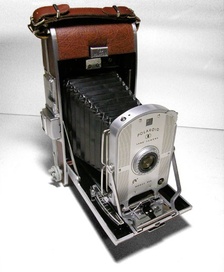This year, MIT celebrates its 150th anniversary with a wonderful neologism: inventional wisdom. MIT, naturally, put the term in an arithmetic form on its celebration website: MIT + 150 = Inventional Wisdom.
 I liked the term as soon as I saw it, and more so when I Googled it, to see how common it was, and Google offered “Did you mean conventional wisdom”?
I liked the term as soon as I saw it, and more so when I Googled it, to see how common it was, and Google offered “Did you mean conventional wisdom”?
Decidedly not.
Inventional Wisdom could (should?) be the byword for the arts in 2011 — not a New Year’s resolution, but a goal, a challenge for art-lovers, museum officials, and others who care about the future of the arts in America. In different ways, we’re all thinking about the arts, about trying to broaden interest in the arts, to give other people the same (or similar) joy and enjoyment we feel when we participate in the arts. Somehow, vast numbers of people don’t seem to get it, we sometimes think — or why aren’t they coming?
It’s pretty clear to everyone that museums (or operas, theaters, orchestras, even jazz bands) can’t simply keep doing exactly what they have been doing: arts participation in the U.S. has fallen across the board, according to the National Endowment for the Arts.
It’s also clear, to me at least, that some “solutions” to the problem aren’t solutions at all — they’re distractions at best and, at worst, changes that negatively alter the very essence of art museums (and operas…etc.). Worse, some such ideas are becoming conventional wisdom, with museums (etc.) simply joining and following the herd.
Arts institutions must innovate, but with Inventional Wisdom. That’s often learned from experience, of course. And from analysis. Experiments are wonderful, even failed ones, as long as they’re not repeated.
 Inventional Wisdom — which to me means true innovation — is hard, and not even MIT is always inventionally at the head of the pack. To celebrate its 150th, for example, the university is mounting an exhibition of its “unique qualities” and it says it has done so in a “unique way.”
Inventional Wisdom — which to me means true innovation — is hard, and not even MIT is always inventionally at the head of the pack. To celebrate its 150th, for example, the university is mounting an exhibition of its “unique qualities” and it says it has done so in a “unique way.”
Not quite. That “unique way” turned out to be a crowdsourced exhibition, the MIT 150 Exhibition, which as I recently noted the Brooklyn Museum and the Walker Art Center have also tried. Crowdsourced exhibits are fine, but I doubt that they are the answer to museums’ attendance troubles.
Nonetheless, MIT’s exhibit will be interesting as a view of the university’s history and the contributions its people have made to the culture: It will include:
…large scale artifacts – a racecar, a wheelchair, and an outer space control system simulator, as well as simpler objects like the wooden model of the city of Boston used in the wind tunnel experiments that solved the not so simple problem of window panes falling from the John Hancock Tower when it was built in 1976….also…the old and the rare – like the 19th century notes of Ellen Swallow Richards, MIT’s first female graduate student who was instrumental in creating the first water quality standards in America, along with the new – a virus built battery recently shown to President Obama….[a]nd the controversial; faculty who provoked politicians on both sides of the aisle with their science and their opinions, and those who irritated their own institution, by proving, with data, that women were always given smaller labs than men….
And, oh yes, the Polaroid 95A camera, above left.
In the visual arena, the MIT museum is soon offering its 3rd annual Luminous Windows winter exhibition of holography, the most advanced method of imaging yet invented. And it might just inspire some artist out there to do something wonderful.
It might even be something worthy of being called Inventional Wisdom, which is what I wish for the arts in 2011. When I find examples, I’ll be delighted to highlight them.
Photo Credits: Courtesy of MIT
